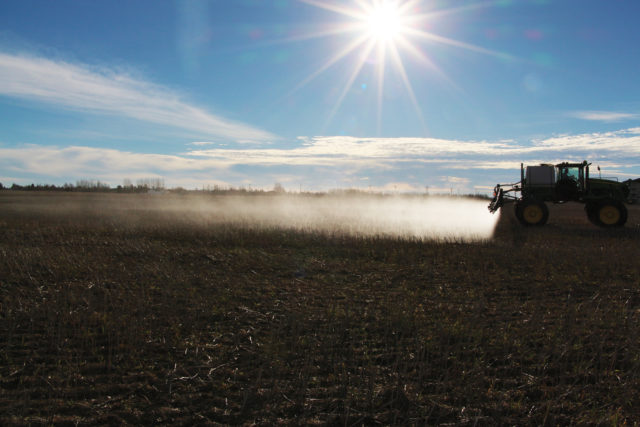
By Tom Wolf
Stewardship is one of those words that is so over-used, we’ve learned to ignore it. Yet its core meaning, the act of properly taking care of something, is fundamental to the survival and prosperity of the crop protection business.
Traditional crop protection using pesticides is at risk. Non-tariff trade barriers such as low Maximum Residue Limits (MRLs) are increasingly used to prevent cross-border movement of our products, and public attention is focused on the safety of commonly used products. As well, the onset of resistance is showing no signs of slowing down.
I once heard a distinguished scientist say, “if you want to know the problems of tomorrow, simply look at today’s solutions to yesterday’s problems.” It’s for this reason we need to take a long view when it comes to stewardship. It’s not just about following the law or addressing a current problem. The consequences of our actions often force other actions and it’s those that need our attention.
Good agronomy is good stewardship
A classic example is herbicide resistance. If we wait until it’s a noticeable problem, nothing can be done to reverse the proportion of weeds that are resistant. When we discover a significant resistant population, we’ve lost at least one mode of action and must turn to another mode of action, or a multiple effective mode of action tank mix. While that has often worked, it may make weed control less effective or more expensive, or it may place more pressure on a single mode of action to take care of the problem. If that product fails, the problem is immediately much more serious. In certain cases, those alternate modes of action, while legal to use, may have less desirable environmental or toxicological properties. Their use can then cause problems with spray drift or MRLs and this draws public attention.
Although none of these impacts are necessarily fatal, taken as a whole they can be death by a thousand cuts. Spraying more doesn’t solve them. Waiting for a miracle product hasn’t worked for the last 30 years. So in this way stewardship means delaying the onset of resistance through agronomic practices.
Good equipment design is good stewardship
At Sprayers101.com, we’ve focused on plumbing innovations in sprayers. We’ve promoted the concepts of continuous rinsing and recirculating booms to save time and improve the performance of a sprayer. At a recent clinic, someone asked why these features aren’t standard equipment if they make so much sense. Good question.
Indeed, good plumbing should be standard on machines. With a traditional boom divided into sections, the act of priming or rinsing the boom requires that the all the “old” liquid in the boom be forced out through the nozzles or boom ends. Unavoidably, it ends up on the ground. Most of the time the sprayer is stationary when that happens, and the resulting area receives a huge dose of the product, harming soil but also becoming susceptible to movement in water. It’s not a story I’m proud of.
I believe stewardship of pesticides starts with design of the sprayer. The equipment must make it more than just possible, it has to make it easy, to practice good stewardship. That’s a job that the manufacturers need to take the lead on.
Low spray drift is good stewardship
Surely spray drift is the responsibility of the applicator. Yes and no. Applicators have a limited weather window in which a safe application can be made. There’s also a limit to how coarse a spray can be before it creates other problems, like loss of efficacy. Pesticides need to be safe enough to neighbouring crops and ecosystems to tolerate small amounts of droplet drift movement. If drift caused by a reasonably cautious application is unacceptable, then perhaps the product needs to be looked at. The federal government’s risk assessment procedure is designed to screen for these.
Vapour drift is a whole other topic. Products that volatilize from a dry deposit aren’t new to ag. For instance, 2,4-D esters are volatile and they’ve been around since 1945. Clomazone is also volatile. Unstable products can move from treated areas for several days after application, depending on weather conditions (primarily temperature, with high temperatures causing greater losses). The only action an applicator can take is to refrain from making the application if weather conducive for vapour formation are in the forecast.
For 2,4-D and clomazone, formulation provided a solution that made the characteristic more manageable. If that solution isn’t available or is shown to be ineffective, then the presence of the product on the market needs to be placed in question. In this case, the responsibility for stewardship lies with the product manufacturer.
A good self-test for stewardship anyone can do is to imagine being on an aircraft and your neighbour, not familiar with agriculture, asks about common agricultural practices. Eventually, the topic of pesticides will come up. And if the question is, “how do you get rid of unwanted pesticide in your sprayer tank,” imagine if you would answer entirely truthfully. If the answer is no, then that’s a practice you can improve on.










